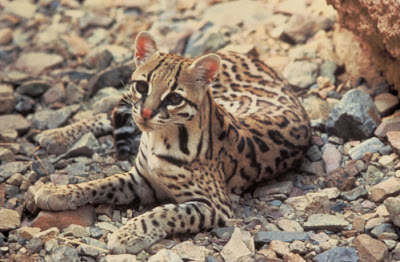A couple weeks ago I wrote a post on the potential impact of the border wall in the Lower Rio Grande Valley. Yesterday's Post had an article on the habitats to be traversed by the new wall.
The legal and scientific battle over the fence -- which will continue despite the administration's waivers -- highlights the reality that prized wildlife species are not respecters of international borders.
While popularly perceived as a barren desert, the landscape that straddles the border includes some of the world's most diverse terrain, such as Arizona's Sky Island area, which features isolated mountains surrounded by grassland or desert. Dotted with evergreen trees at higher altitudes, the region attracts jaguars as well as the Sonoran pronghorn and bighorn sheep that regularly crisscross between the United States and Mexico.
Farther to the east, the Lower Rio Grande Valley is home to one of the last free-flowing rivers in the United States, as well as more than 300 butterfly species, more than 500 bird species and the ocelot, an endangered wild cat. Even though 95 percent of the brush habitat in the four counties encompassing the Lower Rio Grande Valley refuge has been eroded, it still boasts 17 federally endangered or threatened species -- more than the entire state of Louisiana....
One of the most vulnerable species in the valley is the ocelot, a small hunter whose fur resembles that of a jaguar. Between 80 and 100 ocelots remain in South Texas, but their survival depends on access to water and getting to Mexico to breed with ocelots there, because the Texas population lacks genetic diversity.
"They're perilously close to going extinct," said Nancy Brown, a Fish and Wildlife public outreach specialist for the refuge. "You think of that irony, we need our cats to get into Mexico. Genetically, they're all starting to look like the same cat."
 The Department of Homeland Security keeps insisting that plans for the wall take account of vulnerable species and have provisions for protecting them. The department also claims to have completed either an environmental assessment or environmental impact statement for all areas along the wall's route. However, their process for making those assessments is questionable.
The Department of Homeland Security keeps insisting that plans for the wall take account of vulnerable species and have provisions for protecting them. The department also claims to have completed either an environmental assessment or environmental impact statement for all areas along the wall's route. However, their process for making those assessments is questionable."The significance of this area, biologically, is extraordinary," said Evan Hirsche, president of the National Wildlife Refuge Association. He said the administration completed a draft environmental impact statement about the fence in three months, a process that would normally take two to three years.The haste of the wall construction project has been unsettling. Immigrants, documented or not, have been crossing the border for a long time and will continue doing so long after the wall is built. Meanwhile, the project will leave us with long-term costs – a permanent wall, millions of dollars of national debt, damaged ecosystems, and possibly extinct species. The federal government should slow down this process and consider whether the wall's projected benefits really outweigh the costs.
Ken Merritt, who served as project manager for the Lower Rio Grande Valley and two other wildlife refuges in South Texas before retiring in January, called Homeland Security's environmental assessment "a totally inadequate job. They just threw it together." One planned project on the west side of the Lower Rio Grande Valley refuge "basically cuts off wildlife from water," he added.




